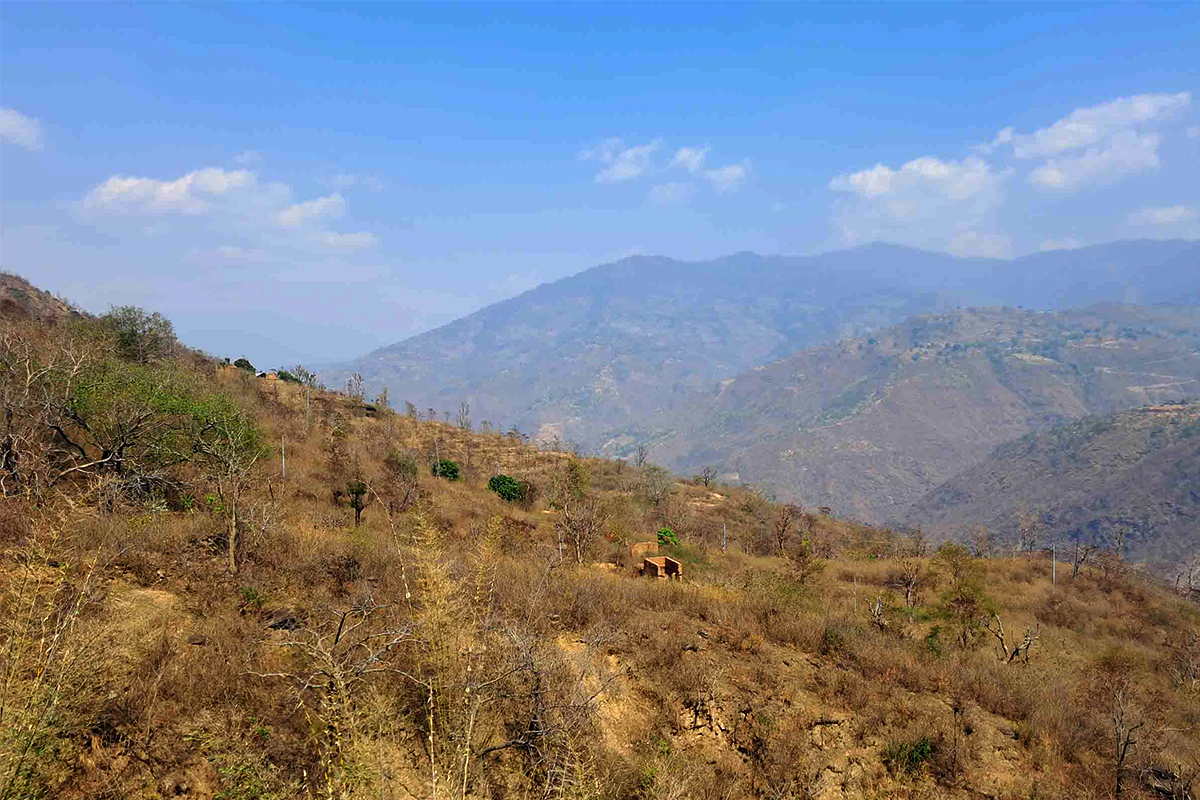The last men standing
Villages in Khotang empty out as entire households leave for cities in the Tarai for easier livesUntil some years ago, this village in Halesi of Khotang used to be a bustling hamlet of 16 households nestled amidst terraced fields. Today, it is a ghost village.
The thatched-roof houses are dilapidated, their walls have caved in and there are bushes and grass growing out of the ruins. There used to be 18 families in Purano Gaun, only a handful of people remain.
Dharma Raj Karki is the only one whose entire family is still in the village. Navaraj Regmi’s family has already moved to Biratnagar, but he has had to stay back in the village to teach at the local school. Mahesh Regmi’s family has settled in Kathmandu.
Only Kamal Raj Regmi of the Nepali Congress is home in the next village of Kathare-Siruvani, forced to stay behind because he was elected ward chair last year.
Read also: Eastern Nepal’s depopulating mountains, Gopal Dahal

As elsewhere in the mid-mountains of Nepal, the outmigration is that subsistence farmers are impacted by climate change, springs are going dry, life is easier in the Tarai. In addition, last year’s wildfires in Khotang affected many of the families.
Not everyone who has migrated has relocated to the plains, some have just moved down the mountain to the fertile banks of a river in Regmitar along the Gaighat-Diktel road hoping that business will pick up.
“In the past, people used to have to travel for days to buy salt and rice, and sell ghee,” says Hari Budhathoki of Regmitar, but most of the families have moved on down to the next big town of Gaighat in Udaypur district, or to Biratnagar.
Many people from eastern Nepal have followed the footsteps of their forebears to move even further afield to Nepali-speaking regions in Northeast India or Sikkim. This is the traditional recruitment region for young Nepalis wishing to join the Brisih, Indian or Nepali militaries.
Read also: Letter from Sikles, Kunda Dixit

Khotang is one of the 32 of Nepal’s 77 districts which have witnessed a sharp decline in population. Most of those districts are in eastern Nepal, with adjoining Bhojpur and Tehrathum witnesses the sharpest declines.
But even among Nepal’s eastern districts, Khotang has been hit especially hard – its population fell from 206,321 in 2011 to 175,340 in 2021. The annual population growth rate is -1.56%, the second-lowest out of all of Nepal’s districts.
The village of Bahungaun is completely deserted–its 40 houses abandoned. In Gairikhola, only Judda Bahadur Karki's family remains, while two more families remain in Karkigaun. It is the same story in Tallobadka, Kahule, Okkharbote, Tallosanne, Thumki, Patihattel, Belbote and Simpani – village after villages with just a few elderly men or women.
This does not surprise ward chair Anish Karki of Halesi Tuwachung-11, since there have been no incentives for locals to stay. There is no help in finding market for the area’s produce, harvests are destroyed by wild animals, and water supply is erratic. Schools and health posts are not properly run, and there are no jobs.
Says Budathoki: “Having a vegetable patch or livestock is no longer a measure of wellbeing. Today, a family’s worth is determined by whether it owns own land in the Tarai.”
Read also: Nepal's demographic dividend, Shristi Karki
Translated by Shristi Karki from the Nepali original in himalkhabar.com




